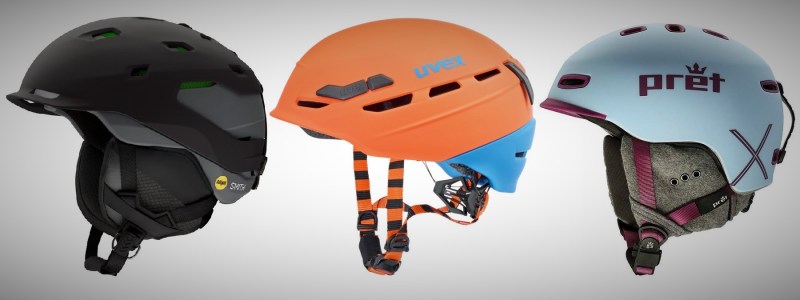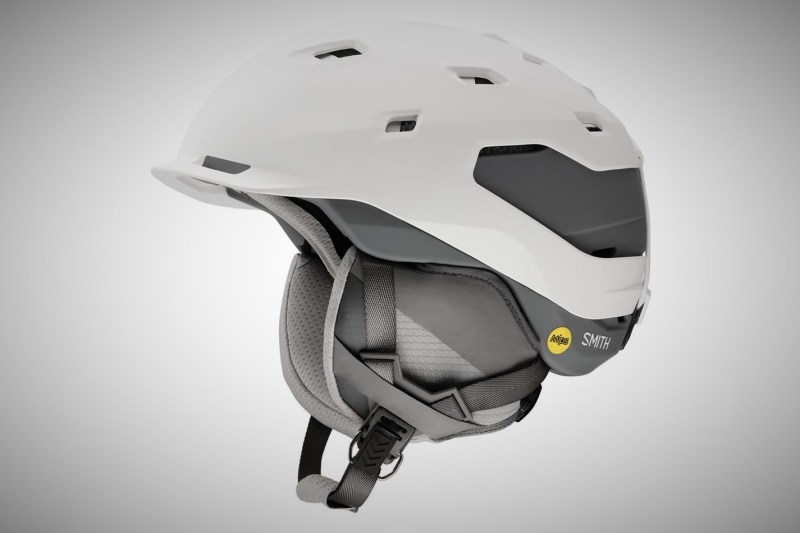
Editor’s Pick: Smith Quantum

Using Smith’s Koroyd material, the Quantum is incredibly light. Don’t let that fool you though. It will stand up to serious damage, and the included MIPS liner, BOA fit system, and Wayfinder straps keep it locked down perfectly. Due to the extra shock absorption of Smith’s Aerocore design, the Quantum can take bumps in side impact zones, outperforming most other helmets.
For The Ladies: Pret Lyric X 
The Lyric X’s plush liner will keep your lady warm and comfortable no matter how hard it’s snowing. The shell boasts a MIPS liner, and RECCO reflector (the only helmet on our list with RECCO technology). Developed specifically with Pret’s athlete team, it is as stylish as it is protective.



